Abstract
Two pigeons were trained to peck a key under several multiple variable-interval variable-interval schedules of reinforcement; different numbers of reinforcements were scheduled in two components of equal duration which were correlated with red and green illumination of the response key respectively. The results showed: (1) that the total number of responses in a session was proportional to the one-sixth power of the total number of reinforcements delivered in that session; and (2) that the ratio of responses between the two components was equal to the one-third power of the ratio of reinforcements between them. This latter exponent may be regarded as reflecting the sensitivity of the distribution of responses between the components to the distribution of reinforcements. It was suggested that the effects of a number of complex schedules of reinforcement could be summarized by different values of this exponent.
Full text
PDF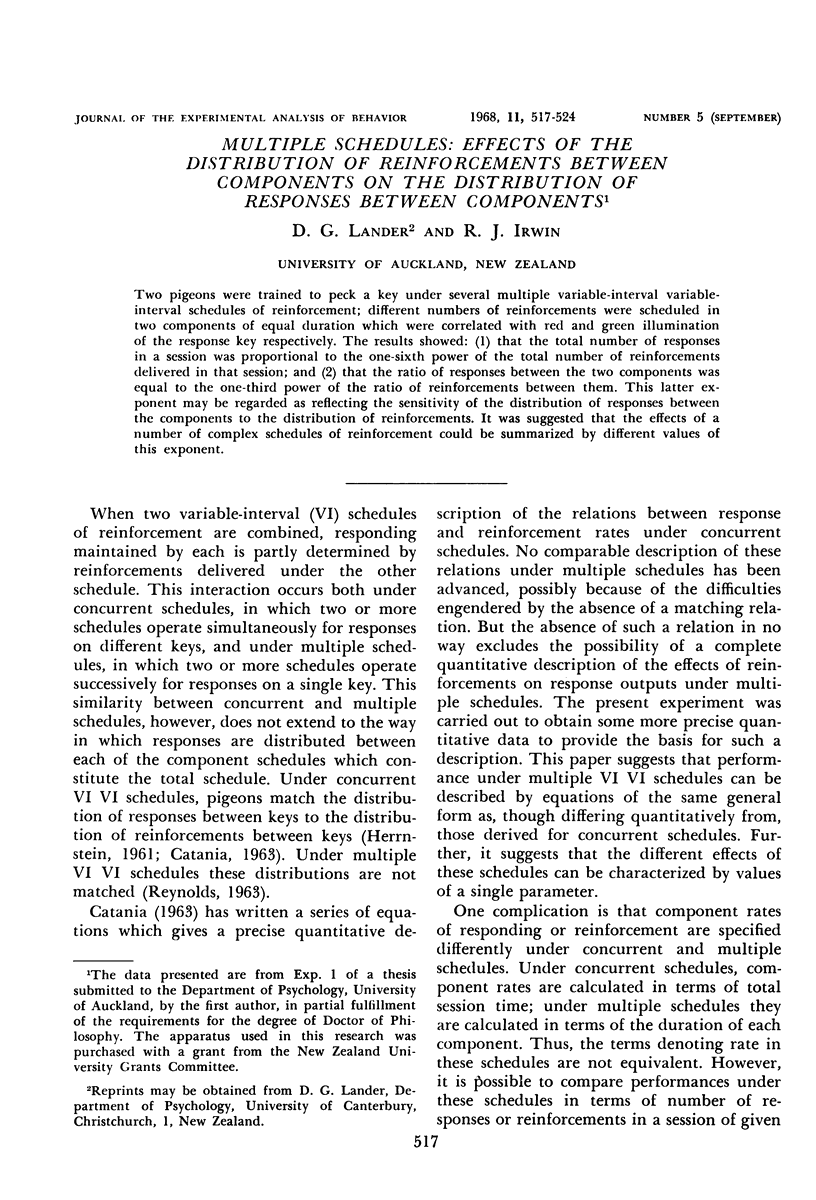
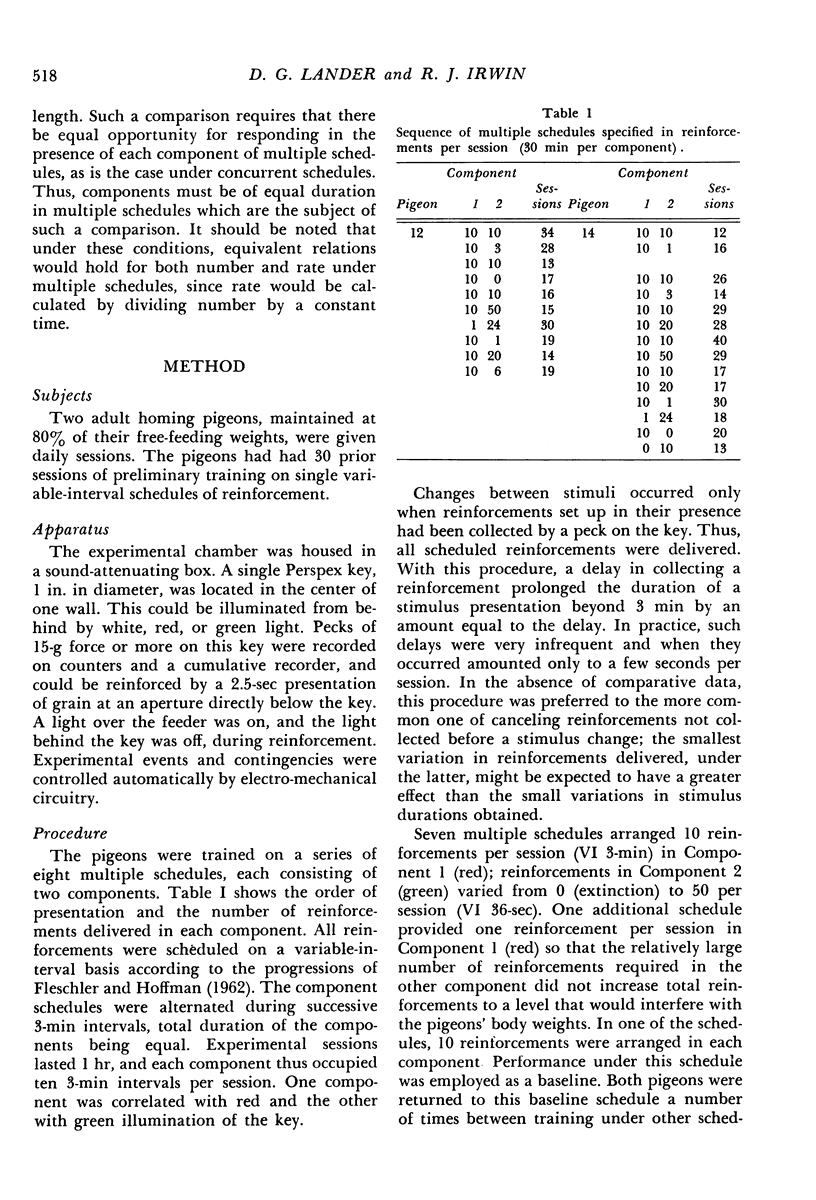
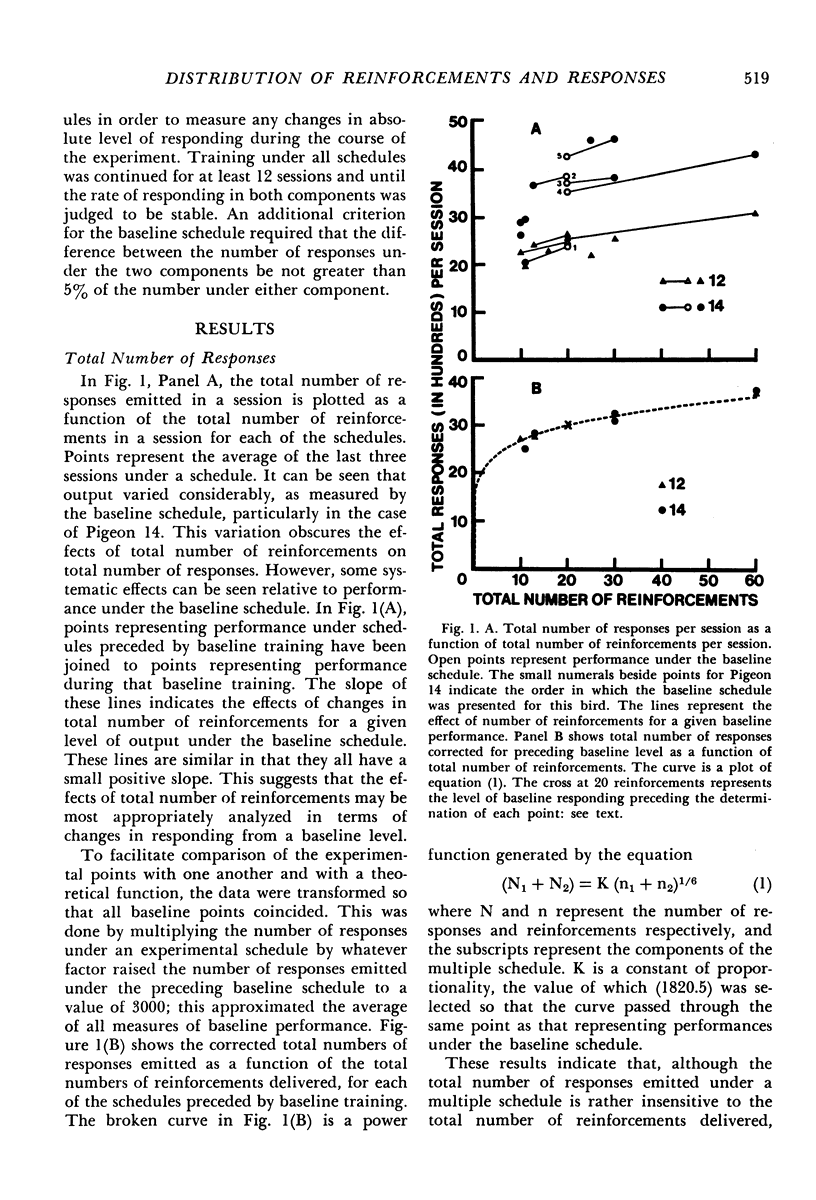
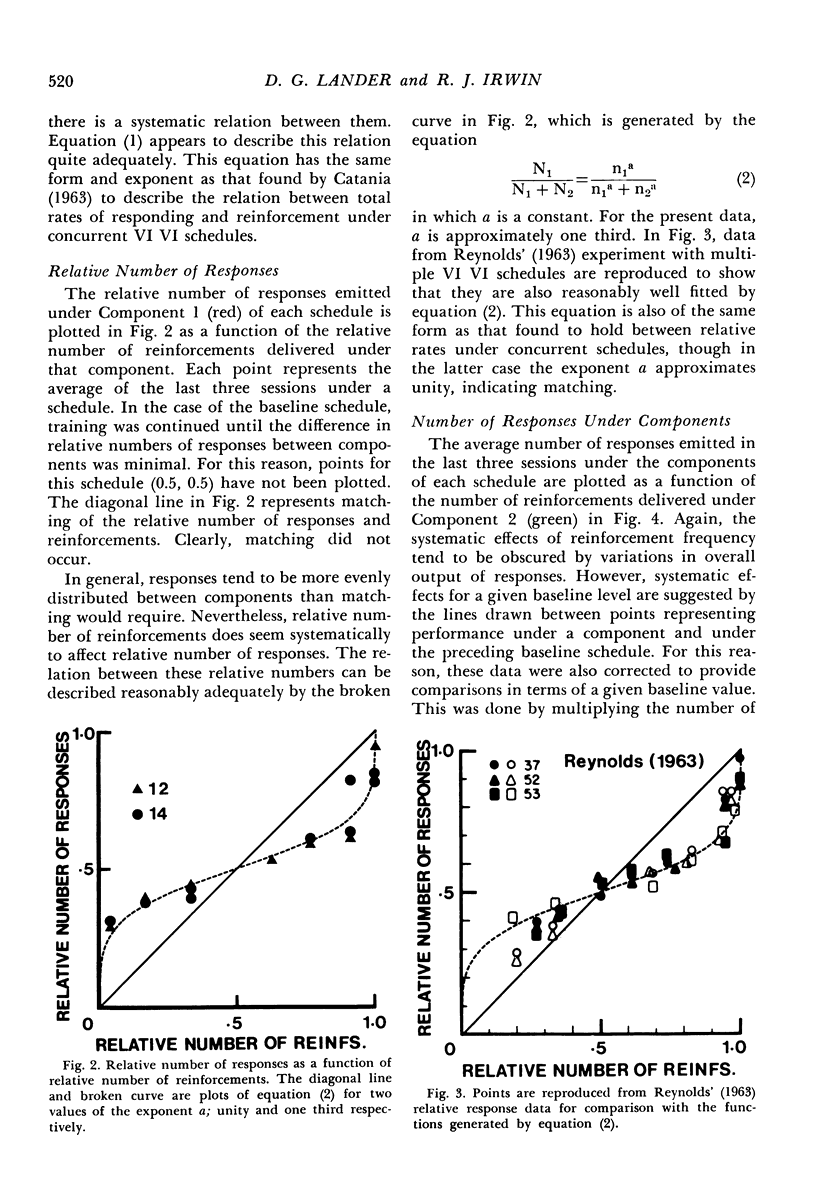
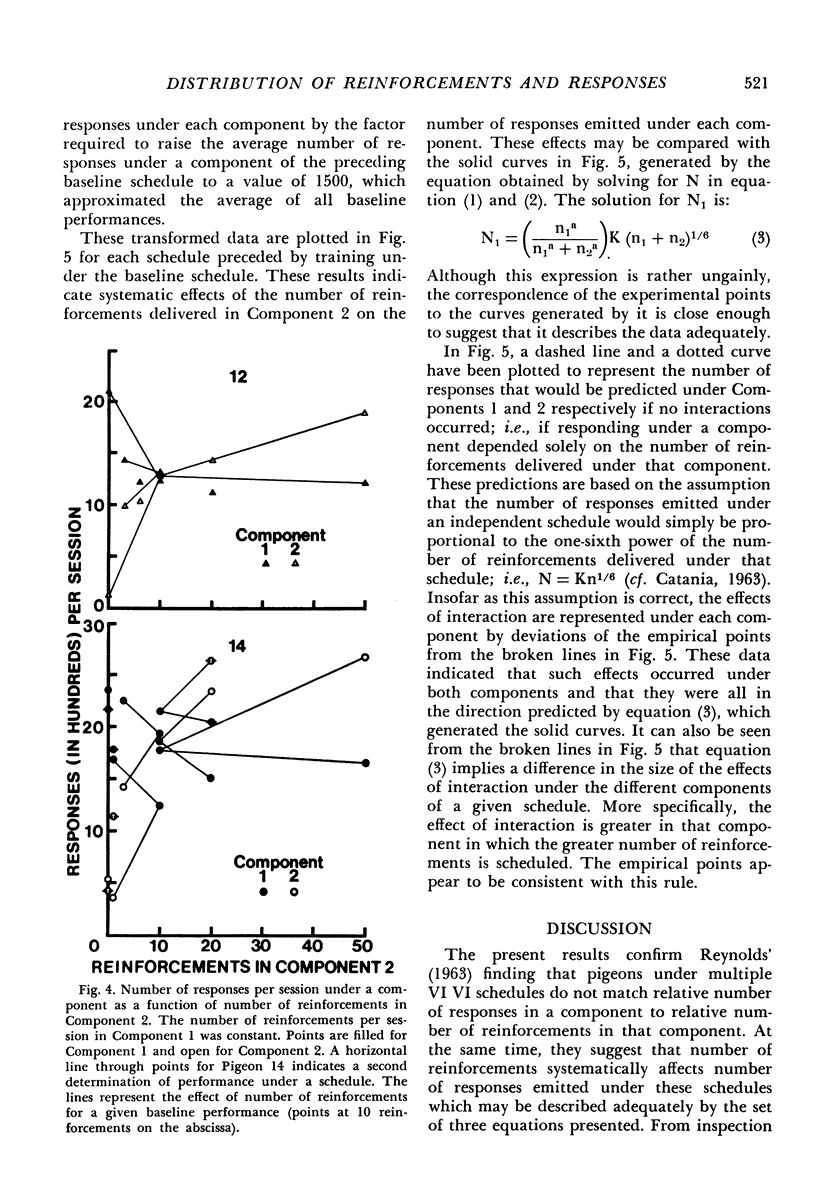
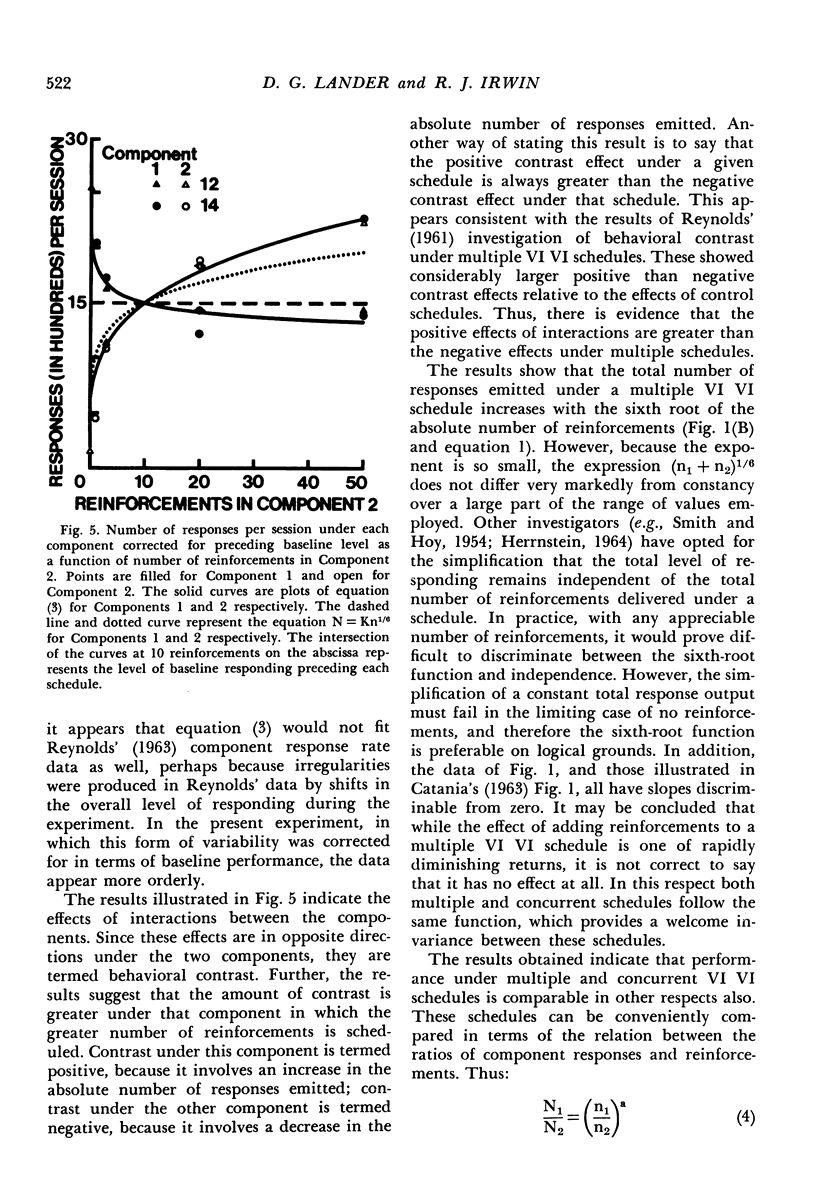
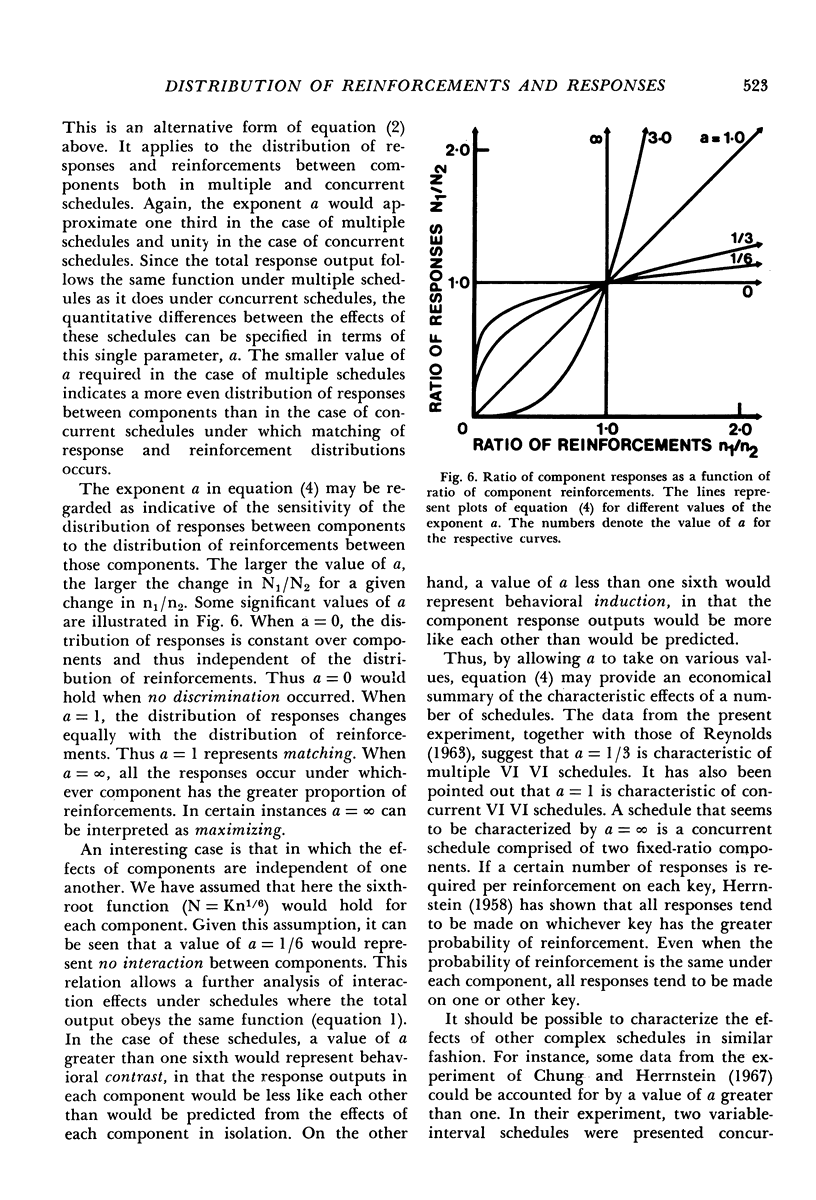
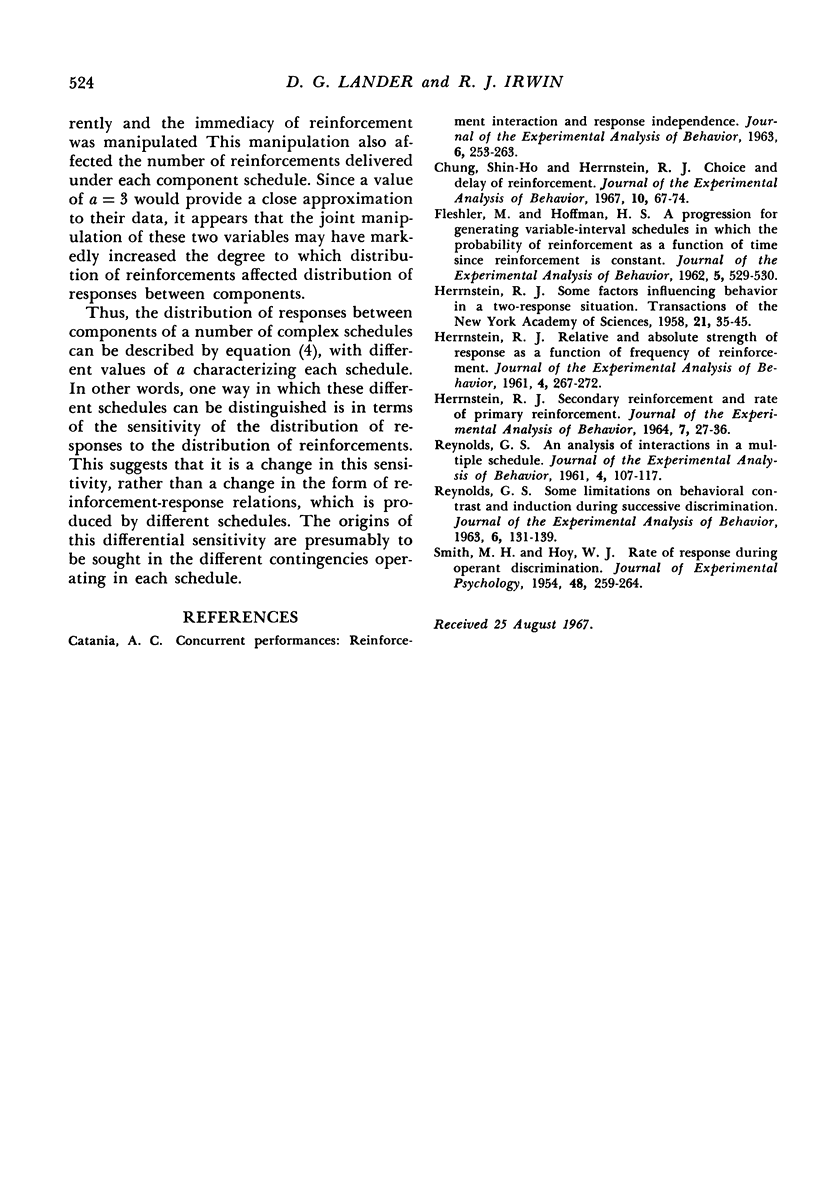
Selected References
These references are in PubMed. This may not be the complete list of references from this article.
- CATANIA A. C. Concurrent performances: reinforcement interaction and response independence. J Exp Anal Behav. 1963 Apr;6:253–263. doi: 10.1901/jeab.1963.6-253. [DOI] [PMC free article] [PubMed] [Google Scholar]
- Chung S. H., Herrnstein R. J. Choice and delay of reinforcement. J Exp Anal Behav. 1967 Jan;10(1):67–74. doi: 10.1901/jeab.1967.10-67. [DOI] [PMC free article] [PubMed] [Google Scholar]
- FLESHLER M., HOFFMAN H. S. A progression for generating variable-interval schedules. J Exp Anal Behav. 1962 Oct;5:529–530. doi: 10.1901/jeab.1962.5-529. [DOI] [PMC free article] [PubMed] [Google Scholar]
- HERRNSTEIN R. J. Relative and absolute strength of response as a function of frequency of reinforcement. J Exp Anal Behav. 1961 Jul;4:267–272. doi: 10.1901/jeab.1961.4-267. [DOI] [PMC free article] [PubMed] [Google Scholar]
- HERRNSTEIN R. J. SECONDARY REINFORCEMENT AND RATE OF PRIMARY REINFORCEMENT. J Exp Anal Behav. 1964 Jan;7:27–36. doi: 10.1901/jeab.1964.7-27. [DOI] [PMC free article] [PubMed] [Google Scholar]
- REYNOLDS G. S. Some limitations on behavioral contrast and induction during successive discrimination. J Exp Anal Behav. 1963 Jan;6:131–139. doi: 10.1901/jeab.1963.6-131. [DOI] [PMC free article] [PubMed] [Google Scholar]
- Reynolds G. S. An analysis of interactions in a multiple schedule. J Exp Anal Behav. 1961 Apr;4(2):107–117. doi: 10.1901/jeab.1961.4-107. [DOI] [PMC free article] [PubMed] [Google Scholar]
- SMITH M. H., Jr, HOY W. J. Rate of response during operant discrimination. J Exp Psychol. 1954 Oct;48(4):259–264. doi: 10.1037/h0056928. [DOI] [PubMed] [Google Scholar]


